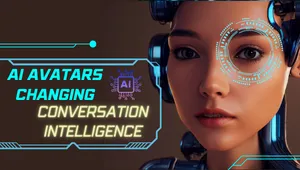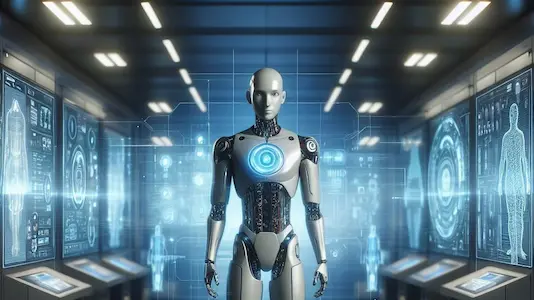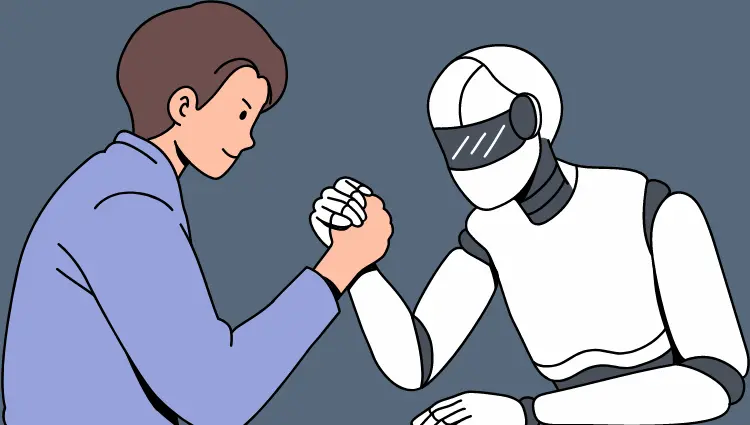AI is going to be a leading technological change. In 2024, they impact how we connect online more than before.
A great example is the global oil and gas company BP, which has blended generative and classic AI into its daily work. Their “AI for everyone” approach lets every employee build, publish, share, and reuse their own AI tools. This aims to make AI accessible to all. Also, those without technical backgrounds can also use AI to innovate and increase their productivity.
What are AI Avatars from New AI?

Creative AI Avatars are advanced digital representations. They use deep learning algorithms and these avatars have very realistic 3D models. This allows more natural AI-human conversations.
These avatars can improve customer experiences. They can be used in digital kiosks at physical stores too. The global AI market will expand a lot, reaching $1,811.8 billion by 2030. So the impact of AI avatars will grow.
Also, companies like Fliki and Synthesia are leaders in this area. They offer realistic AI avatars and voice cloning in many languages. For example, using Fliki you can create custom AI helpers. It can translate content into over 75 languages.
How Industries Use Them
Many industries are using creative AI avatars in new ways. This is changing business and customer service:
Shopping:- AI influencers or avatars give personalized service when shopping online. They understand what you like from your past searches. They suggest clothes and items picked just for you. This gives a better customer experience.
Health:- In healthcare, AI can transform patient care. They can schedule appointments and manage data. This improves work accuracy. Also, they can teach patients about their health conditions and what treatments they will need.
Money:- Finance can use AI avatars to study data. They give insights into investing and risks. They quickly analyze real-time data and give personalized money advice.
Travel:- In hotels, AI avatars can be virtual hotel employees. They suggest personalized dining, fun activities, and local hot spots and also handle bookings and feedback easily. This improves guest happiness and hotel operations.
Other Industries
- E-Education: They offer personalized learning and can answer student questions.
- Virtual Assistance: Their use in platforms like Google Assistant and Siri will improve user connection and efficiency.
- Gaming and Media: AI can also improve gaming by playing NPC roles and generating tailored stories.
- Customer Service: AI avatars improve customer service by directly interacting with customers. It saves time for human representatives.
Improving User Experience
Generative AI avatars will also improve user experiences, especially in retail where they create engaging, personalized shopping. For example, Meet ChatterBots Unleashed (DeepBrain AI Avatars) is changing how we talk to computers.
The avatar creation process has several phases like collecting data, analyzing, language processing, fine-tuning, modelling behaviour, and shaping visuals. This helps avatars to provide more realistic and human-like interactions.
Also Read:- Why Does AI Matter in the Context of Education in 2024?
Behind the Scenes: How AI Avatars are Created

Creating AI avatars is an interesting process that usually starts by choosing the right setup in a calm and well-lit place for the best video quality. You can pick either a webcam AI avatar for a cheaper option or a studio avatar for higher resolution and professional framing.
The recording phase involves capturing footage of the person speaking. It uses a teleprompter to make reading the script easier. This footage is then processed by advanced algorithms which will take many days. It depends on how complex it is and the service provider’s abilities.
Custom avatars have many more benefits. Using custom avatars, you or your businesses can quickly make videos in many languages, connect better with their audience, and lower costs without losing video quality. These avatars give a consistent look across different content. It removes the need for being on camera or complex setups.
Some platforms also offer voice cloning as an upgrade. This makes the avatar speak in the user’s voice. Some studios can record footage if users lack green screens or pro gear which ensures high-quality video for the avatar.
Many platforms support making AI avatars. Synthesia is a leader in easy tools to make custom avatars. These avatars have many uses. From internal videos to brand videos and more. The process focuses on security and ethics as personal avatars need consent and custom footage.
This complex process shows the potential of AI in making digital representations that are not only visually appealing but also capable of engaging audiences in a unique and personalized way.
Also Read:- The Future of Business: AI Consulting Services
Benefits and Challenges
Benefits:
- Cost-Effective and Efficient: AI avatars greatly lower the cost and time needed to make traditional videos. This allows for fast content creation and easy changes without reshooting.
- Personalization and Accessibility: AI avatars also help in more personalised communications. They can even translate them into many languages without needing voice actors.
- Learning and Development: The most common current use is creating engaging content for employees. This is more likely to be remembered than traditional written material.
Challenges:
- Content Accuracy and Quality: Like any AI tool, there is a risk of incorrect outputs, especially when translated into multiple languages. Businesses must filter content to reduce any inaccurate or unsuitable results.
- Data Ownership and Security: Using avatars raises questions about who owns the data. For example, using an employee’s face after they leave the company. This needs to be addressed first.
- Risk Assessments: Companies should fully test and assess risks first. This helps to understand how employees respond in real life before launching AI video tools.
- Potential Misuse: There are concerns about misusing these tools to create deepfakes or unauthorized content. People are adding measures like logos or disclaimers in videos to show they are artificial.
Real-World Examples of AI Avatars

- Healthcare Innovations: A great example is Lenovo, DeepBrain AI, and the Scott-Morgan Foundation working together. They created a very realistic AI avatar for a 24-year-old woman with ALS. This avatar keeps her voice and personality. It also gives her new ways to communicate. This shows how AI avatars can help the healthcare and hospitality industry.
- Film and Entertainment: Big movie studios like Paramount and Disney are exploring using AI in their movies. For example, “Indiana Jones and the Dial of Destiny” had a younger-looking digital Harrison Ford. It opens up new options for visual effects and other similar industries.
- Marketing and Training: Companies like UK’s Synthesia are changing marketing and training. They make AI avatars that can say any script. Many Fortune 100 companies even now started using this.
Future Prospects
- Expansion into Video: After progress in realistic images, video is the next frontier for AI. Companies like Runway are developing AI models that can make good short videos. This is a big step up from early versions. It shows a shift to more engaging AI content.
- Ethical and Legal Challenges: As AI avatars grow, there are worries about copyright lawsuits. Especially about using copyrighted materials to train the models. Ongoing lawsuits can shape the future of AI in terms of legality and ethics.
- AI in Politics and Society: Using AI content in campaigns and spreading false information is a concern. It’s easy to make deepfakes with AI. This will impact elections and the perceptions of the general public. That’s why more protection and ethics are needed.
- Advancements in Robotics: Inspired by AI like GPT-3, there’s a growing trend towards developing more versatile robots that are capable of multitasking. This indicates a future where AI and robotics will combine to create more adaptable and efficient technologies.
Conclusion
AI avatars are for sure will change many things. They will change interactions and capabilities across many sectors like healthcare and entertainment. However, as we adapt to this new system, we should also consider the ethical, legal, and social implications. The future of AI avatars is definitely promising but requires careful handling to maximize benefits and minimize risks.